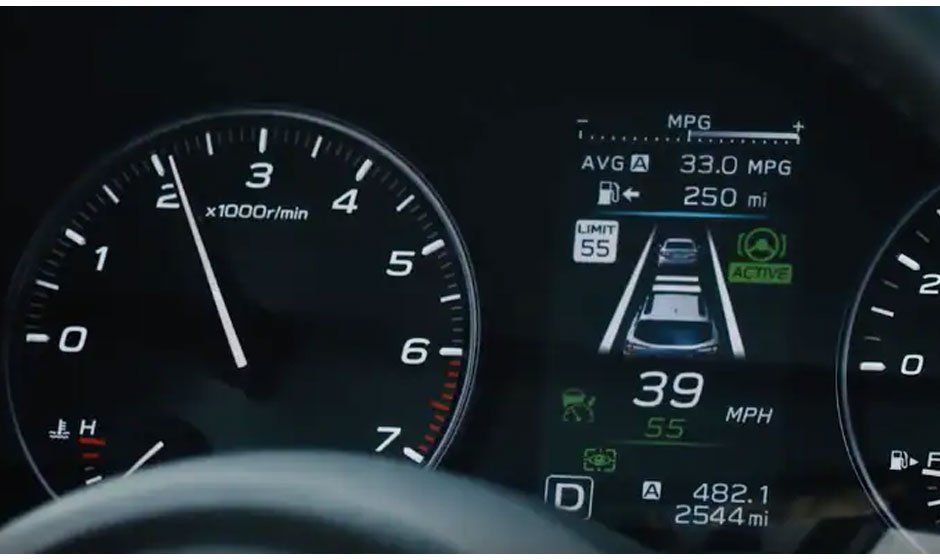What Does Adaptive Cruise Control Problem Mean?

Adaptive Cruise Control (ACC) is a promising vehicle technology that improves driving ease and safety. This technology assists in automatically adjusting the vehicle’s speed to maintain a safe following distance from the vehicle ahead. As a result, driver workload and the danger of collisions are reduced. However, ACC, like any technical innovation, has its hurdles and limitations. So, what does adaptive cruise control problem mean?
Adaptive Cruise Control problem refers to a variety of faults and concerns that may develop when using this feature. The purpose of this essay is to shed light on the potential drawbacks of ACC systems. We’ll look at the ACC issue from a variety of angles. Understanding the ACC issue can help us drive more safely in the future.
What Does Adaptive Cruise Control Problem Mean?
Adaptive Cruise Control (ACC) is a sophisticated driving assistance technology that offers numerous advantages to drivers. However, ACC, like any technology, has limitations and potential complications. Among the most prevalent adaptive cruise control issues and obstacles are:
Limited Environmental Conditions
Weather circumstances such as heavy rain, snow, fog, or glare might have an impact on ACC performance. In such cases, the system’s sensors may struggle to detect other vehicles accurately. This can cause inconsistent behavior or possibly the system to disconnect.
Inaccurate Vehicle Detection
Sensors are used by ACC to detect and track vehicles ahead. These sensors may occasionally misread other items. As cars, for example, road signs or overhanging structures may cause improper speed adjustments or unexpected braking.
Tailgating and Braking
In some cases, the ACC may follow the car in front of it excessively closely, resulting in tailgating. Furthermore, if the leading car switches lanes or quits the road, the system may abruptly brake. It is inconvenient for the driver and other vehicles behind.
Limited Response to Cut-ins
When another vehicle enters the lane in front of an ACC-equipped vehicle, the system may not always respond efficiently. It may fail to adjust the following distance quickly enough, resulting in abrupt braking or causing the driver to intervene.
False Activation or Deactivation
The driver may mistakenly engage or disable adaptive cruise control. The situation will be exacerbated if they are inexperienced with the controls or mistakenly press particular buttons. Incorrect activation can result in unexpected behavior.
Adaptation to Traffic Flow
Some ACC systems may struggle to handle stop-and-go traffic. They may have difficulty swiftly adapting to the flow of busy highways. As a result, it can accelerate and decelerate in jerky fashion.
System Error Messages
ACC, like any other electrical system in a car, is susceptible to malfunctions and failures. On the dashboard, drivers may see error messages suggesting that the adaptive cruise control requires attention or service.
Causes Of Honda Adaptive Cruise Control Problem
Adaptive Cruise Control issues can happen for a variety of reasons. According to The Auto Insider, the following are some of the most typical reasons of ACC issues:
Blown fuse
All electrical components in your vehicle are controlled by fuses. As a result, if you have a blown fuse attached to the cruise control system, it will almost certainly fail. If the fuse is already blown, your cruise control system will not work at all.
Faulty brake pedal switch
A problem with your brake pedal is another probable reason for a cruise control malfunction. Depending on the location of your pedal, this component turns your brake lights on and off. When you push the brake pedal, the cruise control function is disabled.
Sensor or Camera Issues
To detect and estimate the distance between vehicles, ACC uses sensors such as radar and LIDAR, as well as cameras. If these sensors are filthy, occluded, misaligned, or malfunctioning, they can offer erroneous data. This causes problems with the ACC system.
Obstructions and Interference
Objects such as road debris, dirt, snow, or ice can build on the sensors, impairing their functioning. Additionally, electromagnetic interference from nearby gadgets or metallic buildings might interfere with sensor readings.
Software Glitches or Updates
ACC, like any electronic system, may have software-related difficulties or defects. Manufacturers may release updates to remedy such issues if their software becomes outdated.
Electrical Problems
Your cruise control is an electrical device. The system functions thanks to a number of components. If there is an issue, investigate the wire harness and any relevant connectors.
Driver Error
The driver must comprehend and use ACC correctly. Incorrect settings, misunderstanding of the system’s functions, or accidentally pushing the wrong buttons can all cause problems.
Speed sensor problems
Every differential or wheel has speed sensors. These monitor your speed to decide if traction control is required. One of the most important components of your cruise control system is the speed sensors.
Vehicle Modifications
Aftermarket vehicle modifications or the installation of non-OEM parts can have a negative impact on the ACC system’s performance.
How To Fix Adaptive Cruise Control Problems?
Fixing Adaptive Cruise Control issues varies depending on the exact problem. Here are some typical troubleshooting procedures to address common ACC issues:
Check Sensors and Cameras
To detect vehicles ahead, ACC uses sensors and cameras. Ascertain that these components are clean and free of dirt, debris, and obstacles. Clean the sensors and cameras as directed by the manufacturer.
Verify Sensor Alignment
Incorrect sensor alignment can result in inaccurate results. If you believe that your car is out of alignment, take it to a competent technician for calibration or adjustment.
Check ACC Settings
Examine the ACC settings to ensure they are properly adjusted. Examine the following parameters:
Following Distance: Adjust the distance at which you want your vehicle to follow the vehicle ahead.
Maximum Speed: This is the maximum speed that ACC should sustain.
Sensitivity: Some ACC systems allow you to alter the system’s sensitivity to fit your driving preferences.
Road Conditions: Be aware of the environmental circumstances and road types in which ACC may underperform.
Update Software: If the manufacturer of your car provides software upgrades for the ACC system. Check that your car has the most recent upgrades loaded. Software upgrades can sometimes fix issues and enhance system performance.
Calibrate Radar and Cameras
Some ACC systems necessitate regular calibration. If you continue to have problems, have the radar and camera systems calibrated by a skilled expert.
User Error
Make sure you’re utilizing ACC appropriately. Learn the user manual and the exact processes for activating, disabling, and changing the ACC system.
Vehicle Maintenance
Maintain your vehicle on a regular basis, as certain ACC difficulties might be caused by unrelated issues. The ACC’s performance can be hampered if your vehicle’s brakes are worn.
Check for Error Messages
Take note of any error warnings displayed by your vehicle’s ACC system and contact the manufacturer for assistance.
Seek Professional Help
If you are unable to resolve the ACC issue, the best approach is to consult with a competent automotive specialist.
Final Thoughts
Advanced driver assistance system problems are referred to as adaptive cruise control problems. To maintain safe and efficient ACC use, maintenance and troubleshooting are crucial.



